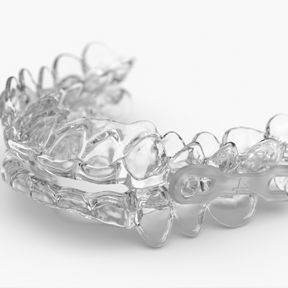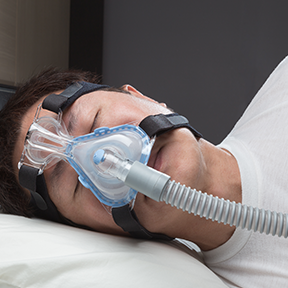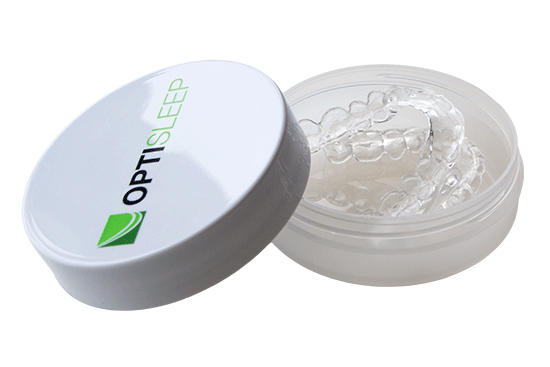
Oral Appliances
A non-invasive solution is the use of oral appliances that pull the lower jaw slightly forward. These devices thus enlarge the airway...

Positive Airway Pressure Devices
Interventions for moderate and severe obstructive sleep apnea may include sleeping with the help of a positive airway...
OPTISLEEP Therapeutic Appliance:
Custom-designed, durable and effective

Benefits of oral appliance therapy
Why choose this form of treatment?
- Approved by the American Academy of Sleep Medicine as a first line treatment for mild to moderate OSA
- Comfortable and easy to wear
- Convenient and easy to carry when traveling
- Non-invasive
- Quiet
- Easy to care for
How to get diagnosed for obstructive sleep apnea
Do you have trouble sleeping, snore loudly or think that you may suffer from obstructive sleep apnea? You should take those signs seriously and talk to your physician about a diagnostic sleep apnea test.
A definitive diagnosis for obstructive sleep apnea is made based on a sleep study, which measures sleep quality and the body’s response to sleep problems using a monitor called a polysomnogram. It can be done either with a portable device at home or in a sleep lab, where sensors are attached to your body to enable the physician to monitor your symptoms during the night.
A key piece of diagnostic data generated by the sleep study is the apnea hypopnea index (AHI), which is the combined number of apneas (breathing pauses) and hyponeas (decreased air flow) recorded per hour. Your doctor will use this and other criteria to determine whether you have sleep apnea, its severity, and recommended treatment approaches.



